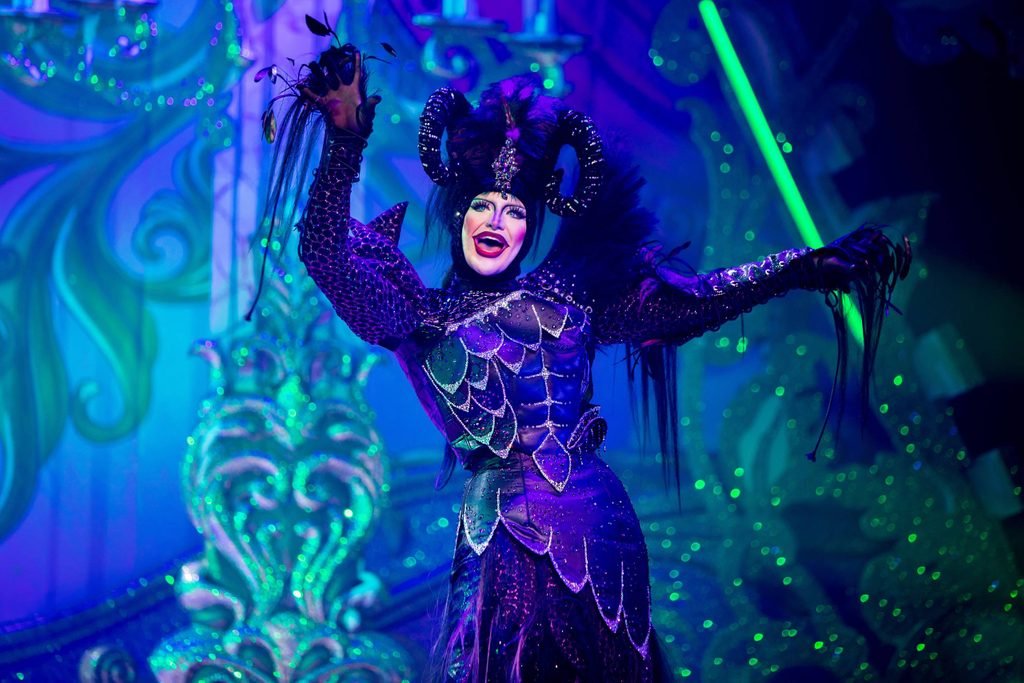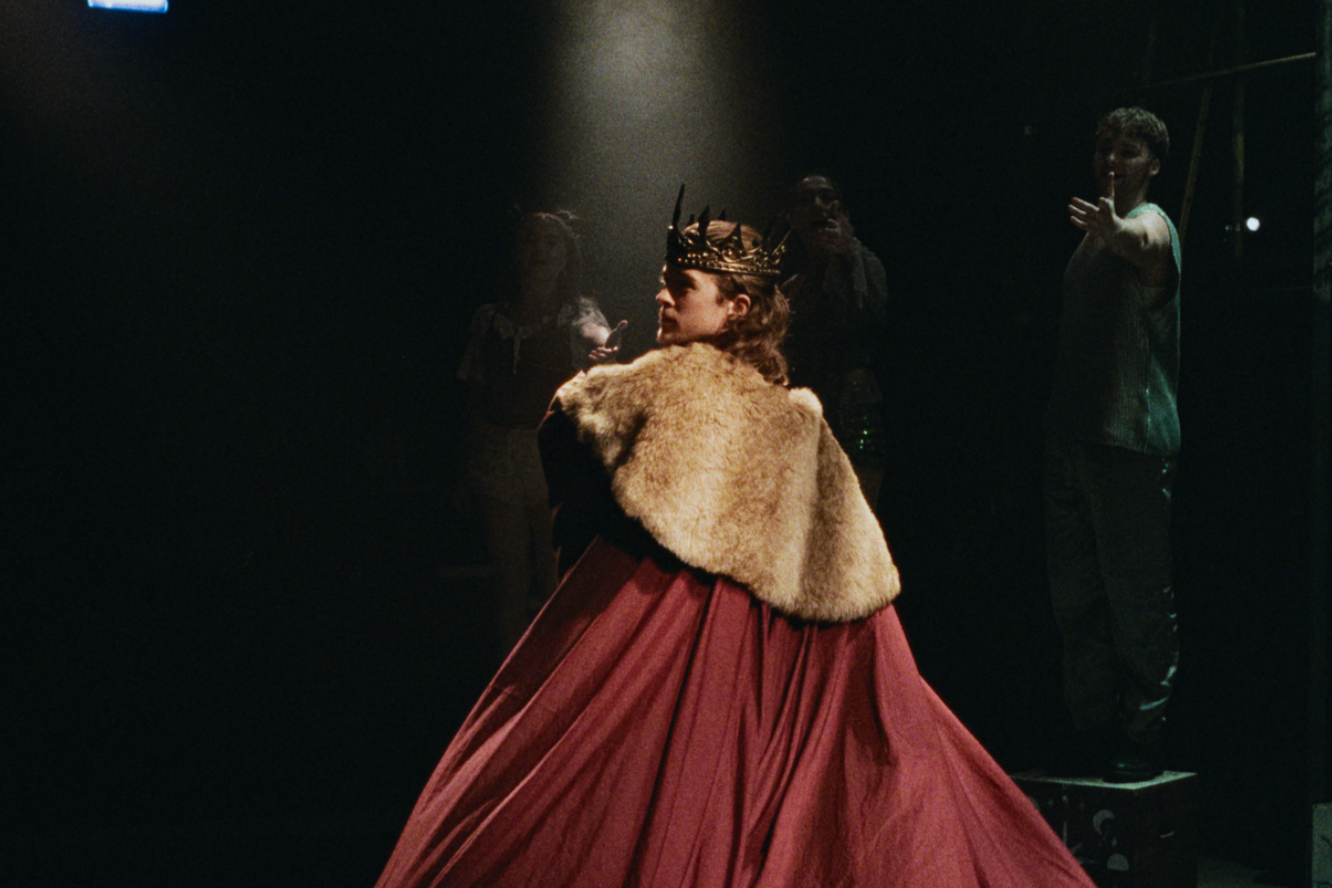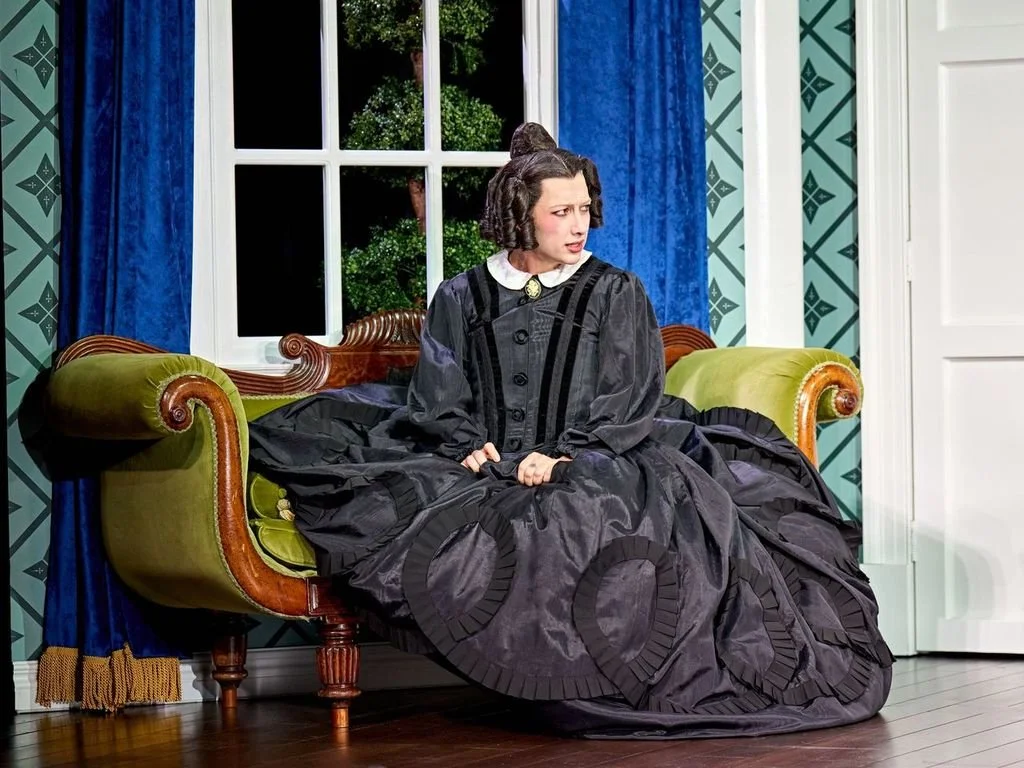Hadestown at Lyric Theatre Review (2025)
Written by ZiWen Gong for Theatre & Tonic
Disclaimer: Gifted tickets in exchange for an honest review
Against a dark background, a hand gently holds a bright red flower. This image has become a symbol of the musical Hadestown. After winning eight Tony Awards, this work – with book, lyric and music by Anaïs Mitchell and direction by Rachel Chavkin - arrived at the Lyric Theatre in the West End in February 2024, earning the love of many audiences. And in less than two years, a new cast has brought a fresh feeling to the production.
In Greek mythology, Eurydice is bitten by a venomous snake while walking in the forest, and her soul is taken to the Underworld. Orpheus, in order to save his wife, journeys to the realm ruled by Hades. In the musical, the story seems to give Eurydice a choice. While their story remains the central thread, the narrative also weaves in the relationship between Hades and Persephone. Because Hades always arrives early to take Persephone back to the Underworld, spring departs unusually soon. In the midst of the cold and famine, Eurydice meets Orpheus - a poet, a musician. He is writing a song, a song that could bring spring back. The two quickly fall in love, but the harsh winter still comes, and Orpheus’s song remains unfinished for a long time. The harshness of reality brings Eurydice immense pain. In order to have a life without hunger or cold, she makes a deal with Hades and comes to the Underworld to work for him. However, she soon realizes that the people here seem to have lost their souls, becoming empty shells without thoughts or will. She wants to leave, but it is already too late. Just then, Orpheus, after overcoming great trials and obstacles, arrives in the Underworld and finds her. The two of them move Hades with their love, and he allows them to return, but under one condition: Orpheus must walk in front, Eurydice behind him, and only if he does not look back can they both return to the world above the ground…
The music of Hadestown blends folk, jazz, and blues. Its melodies are simple yet beautiful, and the notes evoke a strong emotional response from the audience. The stage design (Rachel Hauck) and the use of lighting (Bradley King) heighten the emotional intensity for both the performers and the audience. The stage is just the right size. It is large enough to allow the actors and set pieces to shine, yet intimate enough to create a close connection between the characters and the audience. It resembles an underground tavern, with the entire band performing live on stage. At the centre of the stage is a turntable, symbolising both the characters' journey and the cyclical nature of their story. “Wait for Me” is one of my favourite moments in the entire show. On a dimly lit stage, several chandeliers swing violently overhead, casting flickering, uncertain light. Orpheus clutches a red flower tightly in his hands as he sings, "Wait for me, I’m coming." With his voice, the walls at the back of the stage part, opening a crack for him to pass through. In that moment, it truly felt like an epic was unfolding right before my eyes.
Dylan Wood’s Orpheus carries an energy so pure it borders on naive. He says whatever comes to mind, in a way that’s simple, sincere, and endearing. However, in scenes with heightened emotion, his feelings can sometimes come across as a bit thin. If there were more subtle emotional shifts and deeper expressions of sorrow when faced with the loss of his beloved, it would be even more moving. Desmonda Cathabel’s Eurydice is strong-willed and very likable. Her emotions flow with clarity, making every decision she makes feel completely understandable. I also really appreciated the curiosity she shows toward the Underworld early on. She’s like a little bird fluttering away from Orpheus’s embrace. And in that moment, you can almost sense that Orpheus may not be able to hold on to her. Cedric Neal’s Hermes is very engaging. Although he stands on the side of Orpheus and Eurydice, his care isn’t always expressed through direct protection. He’s more of a guide, a teacher, someone who helps Orpheus grow by testing him. As the cast members newly joined the production from mid-September, Nicola Roberts’ Persephone was one of the characters I was most curious about. Her Persephone is elegant and gentle. Watching her walk onstage with a basket of flowers immediately evokes the image of Persephone picking blooms in a sunlit field. However, during her performances of Livin’ It Up on Top and Our Lady of the Underground, her stage presence occasionally felt a bit subdued, not quite commanding the space as fully as the music calls for. Comparatively speaking, Chris Jarman’s Hades has the strongest presence on stage - he truly embodies the ruler of the Underworld. However, the chemistry between Roberts and Jarman still has room to grow. If the two could show more affection toward each other, their story would become far more compelling. I really liked the unity of the Fates (Lucinda Buckley, Lauran Rae, Allie Daniel). When the three of them sing together, it’s beautifully harmonious. However, their portrayal of fate leans a bit too villainous. If they could take a more neutral emotional stance, such as showing a hint of pity when bringing suffering to Orpheus and Eurydice, it would give their characters more depth.
Although there is still room for this production to become more layered both in terms of the script and the actors’ interpretations, it is already a truly unique work. Rarely does a work carry such a melancholy, ancient and romantic air, as though it were a ballad passed down through generations, a song that has travelled from the distant past. Though the tale it tells always ends in sorrow, it never fails to begin with the same kind of beauty. I hope this show can remain in the West End for a long time, so that people can continue to step into this old and beautiful world whenever they wish.
Hadestown is currently open for booking at Lyric Theatre until 27th September 2026.
★★★★


















